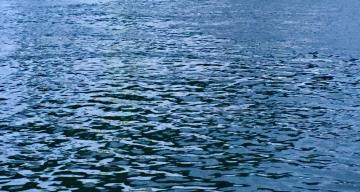
The discovery of a massive freshwater reserve off the Canterbury coast is raising questions over who controls supplies.
The aquifer, underneath the Pacific Ocean, holds 2000 cubic kilometres of water - about 34 times as much as is in Lake Taupo - and is thought to be connected to an onshore system.
NIWA scientist Joshu Mountjoy says there is more work to do around its discovery.
"Regional councils manage our groundwater reservoirs and resource onshore, and a big part of those systems - if it carries on offshore - they are modelling and managing something they have no knowledge about."
The aquifer lies just 20m beneath the ocean floor, making it one of the shallowest ever found in the world. It reaches about 60km off the coast, and is partly replenished by rainfall and groundwater flowing from the coast between Ashburton and Timaru.
It's suspected to hold the equivalent of half the groundwater across Canterbury.
Most of it was trapped during the last Ice Age.
Dr Mountjoy says it could be used for drinking water - but first they have to figure out who has control over it.
"They really want to know this information, so we are working with them in different places. [It's] by far the most advanced that we've done anywhere in New Zealand."
Dr Mountjoy says they are talking to several councils.
Hints of the aquifer were first noticed in 2012, when salt and freshwater mixed together was discovered during a scientific drilling project.
A 2017 expedition which measured electrical resistance - influenced heavily by the amount of salt present - confirmed it was there. But scientists are yet to see it with their own eyes.
"At the moment we have used remote techniques, modelling and geophysics. We really need to go out there and ground-truth our findings and we are investigating options for that," said Dr Mountjoy.
The find could help solve water shortage issues in Canterbury and other places like Hawke's Bay, if other offshore sources are found.
The research was published this weekend in journal Nature Communications.


